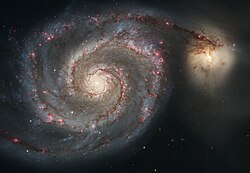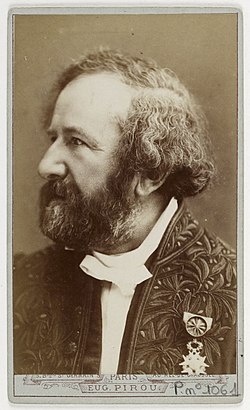1843 ⟶ Discovery of Sunspot Cycle
German amateur astronomer Heinrich Schwabe, who had been stu...Year
1843
1845
1846
1868
☀️ Discovery of Sunspot Cycle
German amateur astronomer Heinrich Schwabe, who had been studying the Sun for the past 17 years, announces his discovery of a regular cycle in sunspot numbers - the first clue to the Sun's internal structure.⟶

AstronomySolar PhysicsSunspotsHeinrich Schwabe19th CenturySolar CycleAstronomy
 Germany
Germany🔭 Construction of a Large Reflecting Telescope
Irish astronomer William Parsons, 3rd Earl of Rosse completes the first of the world's great telescopes, with a 180-cm mirror. He uses it to study and draw the structure of nebulas, and within a few months discovers the spiral structure of the Whirlpool Galaxy.⟶

AstronomyTelescopeWilliam ParsonsObservational Astronomy19th CenturyNebulaeWhirlpool Galaxy
 Ireland
Ireland📸 Early Astrophotography of the Sun
French physicists Jean Foucault and Armand Fizeau take the first detailed photographs of the Sun's surface through a telescope - the birth of scientific astrophotography. Within five years, astronomers produce the first detailed photographs of the Moon. Early film is not sensitive enough to image stars.⟶

AstronomyAstrophotographyJean FoucaultArmand FizeauPhotography19th CenturySunMoon
 France
France🪐 Discovery of Neptune
A new planet, Neptune, is identified by German astronomer Johann Gottfried Galle while searching in the position suggested by Urbain Le Verrier. Le Verrier has calculated the position and size of the planet from the effects of its gravitational pull on the orbit of Uranus. An English mathematician, John Couch Adams, also made a similar calculation a year earlier.⟶

AstronomyPlanetary ScienceNeptuneUrbain Le VerrierJohn Couch AdamsJohann Gottfried Galle19th CenturyCelestial MechanicsGravitation
 Germany
Germany France
France☀️ Discovery of Helium
Astronomers notice a new bright emission line in the spectrum of the Sun's atmosphere during an eclipse. The emission line is caused by an element's giving out light, and British astronomer Norman Lockyer concludes that it is an element unknown on Earth. He calls it helium, from the Greek word for the Sun. Nearly 30 years later, helium is found on Earth.⟶

AstronomyPhysicsHeliumLockyerSpectroscopy19th CenturyElementsSolar System
 United Kingdom
United Kingdom